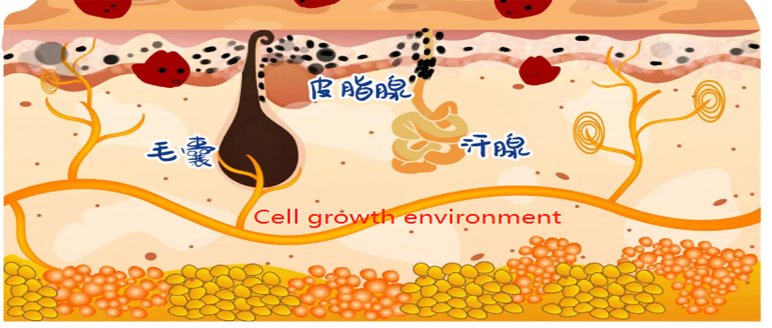How To Treat Children Ichthyosis
Ichthyosis (ick-thee-owe-sis) means "fish scale skin condition" and is the name of a group of hereditary skin diseases that cause dryness, scaly, and thickening of the skin.
The skin has many important functions, including physical protection, providing a barrier to keep the skin moist, prevent infection, and help regulate body temperature.
In normal skin, new skin cells are formed in the deepest layer of the skin, while dead cells are shed from the surface of the skin. In in ichthyosis, either dead cells fall off too slowly, leading to the accumulation of stem cells in the uppermost layer, or the production of new cells in the lower layer is too slow, causing the skin to lose too much water.
There is no known cure for ichthyosis, but there are some treatments that can help improve skin conditions.
Symptoms and signs of ichthyosis
Symptoms of ichthyosis include thick, scaly, dry, and cracked skin. If your child has ichthyosis, their skin may look normal at birth, but then gradually dries out and becomes scaly. Symptoms usually appear at 5 years of age.
All parts of the body can be affected by ichthyosis, including the face and scalp; however, the curvature of the arms and legs is usually not affected. The skin on the palms and soles of the feet is often thick.
Most children with ichthyosis have mild ichthyosis, which has little effect on their overall health and well-being.
Some children may find this situation uncomfortable or embarrassing.
In rare cases, it can be very serious, affecting the entire skin surface or causing blisters. In this case, repeated infections, discomfort, and sweating problems may occur.
What causes ichthyosis?
Hereditary ichthyosis (passed from parent to child) usually occurs at birth or develops during childhood. Ichthyosis is a genetic disease. It is not caused by infection and is not contagious (it cannot be infected by other people).
Acquired ichthyosis is more common in adults and can be caused by various diseases or drugs.
When to see the doctor
If you are worried about your child's skin, please consult your family doctor. The doctor will examine your child's skin and may refer you to a pediatrician or pediatric dermatologist (skin specialist). A skin biopsy (a small sample of skin, anesthesia) and genetic testing (blood or saliva) may be needed for diagnosis.
If the skin on your child's feet causes skin thickening, pain, and cracking, your child may need to see a podiatrist for further management and treatment.
Care at home
If your child has ichthyosis, you may need to take time every day to take care of their skin.
Moisturizer helps to improve the dryness of the skin, replace the lost water and keep it in the skin. It needs to be applied regularly, especially after showering or bathing.
Avoid soap as much as possible, it will make the skin drier, and use soap substitutes, such as oils and washing liquids.
If repeated infections are a problem, adding bleach (along with bath oil or detergent) to your child's bath can help reduce bacteria on the skin and prevent further infections.
For the scalp, shampoos containing salicylic acid or tar can reduce scaling and help relieve itching. After washing the hair, use a brush to remove the scales from the scalp.
Ichthyosis is a painful disease for children and their families. Children with this disease may feel low self-esteem, be teased or bullied. It is helpful to meet other young people in similar situations (see below for details).
Follow-up
If your child's skin suddenly deteriorates due to pain, cracking, oozing/crying/scabbing, see a doctor. Your doctor may prescribe antibiotics to treat any skin infections.
If you are worried about your child's treatment, talk to your doctor. If your child is taking oral medications, don't forget to have regular blood tests.
Points to remember
An ichthyosis is a group of inherited skin diseases that cause dryness, scales, and thickening of the skin.
It usually appears at birth or develops during childhood.
Most children with ichthyosis have mild symptoms that have little effect on their overall health and well-being. Ichthyosis is very serious in some children, affecting the entire skin surface or causing blisters.
Treatment may include medications and taking good care of the skin at all times.
If the doctor prescribes vitamin A drugs to your child, they will need regular blood tests and check-ups.



0 条评论:
发表评论
订阅 博文评论 [Atom]
<< 主页